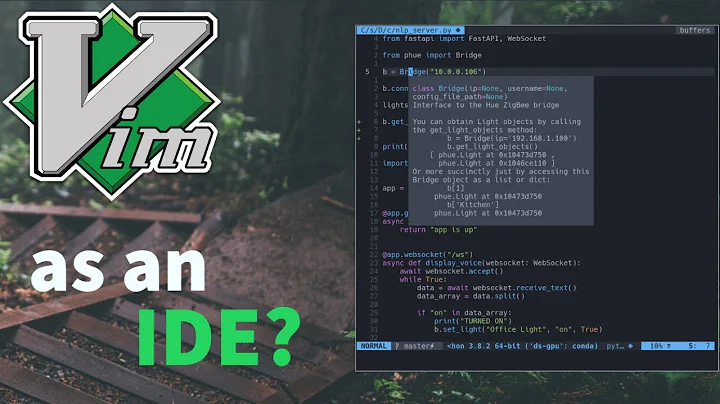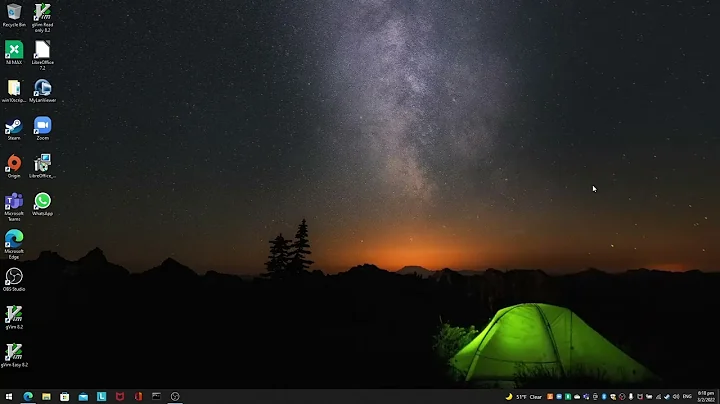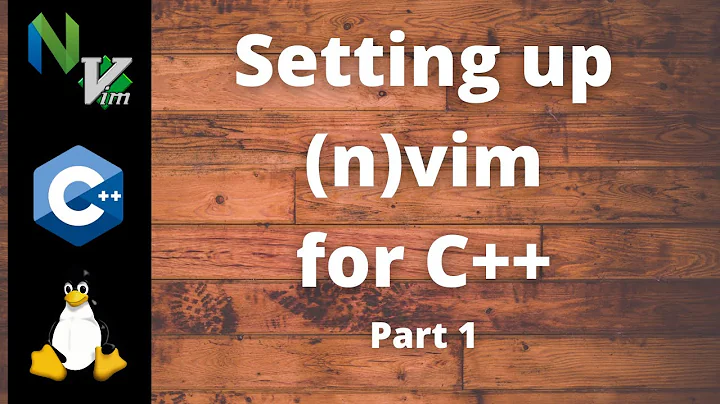Setting Vim whitespace preferences by filetype
Solution 1
there are many ways, but here's a simple, easy to understand way. add these lines to your ~/.vimrc:
autocmd FileType html setlocal ts=2 sts=2 sw=2
autocmd FileType ruby setlocal ts=2 sts=2 sw=2
autocmd FileType javascript setlocal ts=4 sts=4 sw=4
Solution 2
Peter's answer is straightforward enough, but unfortunately the options aren't right. You need to use the following options instead:
autocmd Filetype html setlocal ts=2 sw=2 expandtab
autocmd Filetype ruby setlocal ts=2 sw=2 expandtab
autocmd Filetype javascript setlocal ts=4 sw=4 sts=0 noexpandtab
Also note:
- You can make vim show tab characters by using
:set list. - Once you have the tab/space options set correctly, you can make vim repair the file (replace spaces with tabs or vice versa) using the
:retab!command.
Solution 3
+1 to Peter's answer, but Vim provides another solution as well. If you want to do something more complicated than a single setlocal, like setting up a whole bunch of options, commands, and mappings at once, then vim's filetype plugin feature comes to the rescue.
You need to have filetype plugin on or filetype plugin indent on in your .vimrc, and then to create a plugin for e.g. ruby you can create ~/.vim/ftplugin/ruby.vim. Technically you can use any commands you like in here, to be run when a Ruby file is loaded, but the recommended ones include setlocal, map <buffer>, command -buffer, and defining functions. Lots more information is in the User Guide; if you're pretty familiar with scripting vim then jump to :help 41.11, otherwise read :help usr_40 and :help usr_41.
Solution 4
There's also a nice vim script: DetectIndent which tries to detect the indentation of a file that you open. It's very handy if you work with many files with different coding style.
I use an autocommand in my .vimrc:
:autocmd BufReadPost * :DetectIndent
Solution 5
To insert space characters whenever the tab key is pressed, set the 'expandtab' option:
:set expandtab
Next step is to control the number of space characters that will be inserted when the tab key is pressed, set the 'tabstop' option. For example, to insert 2 space for a tab, use:
:set tabstop=2
Related videos on Youtube
nelstrom
Updated on July 23, 2020Comments
-
nelstrom almost 4 years
At my work, I am required to follow the house style for indentation, which goes as follows:
- 2 spaces when coding html and ruby
- tabs when coding javascript, with tabwidth=4 recommended
What is the best way to specify different whitespace preferences per filetype?
-
acgtyrant almost 9 yearspossible duplicate of Changing Vim indentation behavior by file type
-
 Mikael Lindlöf over 8 yearsAll these answers just made me more confused. The problem is that the options are up to preference. The accepted answer has a nice syntax though. This was an excellent guide: vimcasts.org/transcripts/2/en
Mikael Lindlöf over 8 yearsAll these answers just made me more confused. The problem is that the options are up to preference. The accepted answer has a nice syntax though. This was an excellent guide: vimcasts.org/transcripts/2/en
-
James McMahon over 10 yearsWhat's the benefit of
expandtaboversts=2 -
zdsbs over 10 yearsts = 'number of spaces that <Tab> in file uses' sts = 'number of spaces that <Tab> uses while editing' sw = 'number of spaces to use for (auto)indent step' for details see: vimdoc.sourceforge.net/htmldoc/quickref.html#option-list
-
 ajmccluskey about 10 years@JamesMcMahon expandtab expands all tabs to spaces. sts (softtabstop) inserts spaces and tabs for indents: as many tabs as will fit in the indent based on the size of tabstop, and then spaces after that. Of course, if expandtab is on, all the tabs that get inserted are converted to spaces. stackoverflow.com/questions/1562336/… might help further. Without expand tab, Peter's answer would insert tabs that are 2 chars wide, not spaces.
ajmccluskey about 10 years@JamesMcMahon expandtab expands all tabs to spaces. sts (softtabstop) inserts spaces and tabs for indents: as many tabs as will fit in the indent based on the size of tabstop, and then spaces after that. Of course, if expandtab is on, all the tabs that get inserted are converted to spaces. stackoverflow.com/questions/1562336/… might help further. Without expand tab, Peter's answer would insert tabs that are 2 chars wide, not spaces. -
Michael Durrant almost 5 yearsI needed to append expandtab at least for ruby, see answer by 'too much php' here







